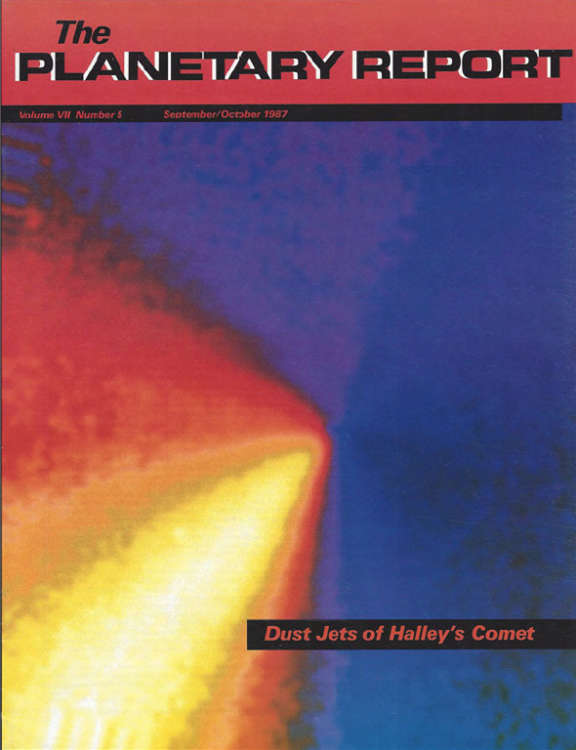Dust Jets of Halley's Comet

One dust jet theory concerns the density of dust particles as they are propelled away from the nucleus, The most popular theory is that they are accelerated by expanding gas heated by the Sun. Once they are up to speed, they move uniformly in a straight line away from the nucleus. This motion should occur in the area surrounding the nucleus where the force of solar radiation pressure is minimal. If this theory is correct, the brightness caused by light scattering off the dust should fall off inversely with distance. This theory comes from geometrical arguments about how particles uniformly move away from a point source.
This image of Halley's Comet has been adjusted to show the fall-off. Each point in the image has been multiplied by the distance from the nucleus, and false color has been added to enhance the contrast. Radial lines coming from the nucleus are constant in brightness, showing that the brightness—and therefore the dust—falls off inversely with distance.
The theory holds, assuming the dust comes from a single point, that it travels at a constant velocity away from the nucleus and that the particles don't break apart. For the dust density theory, these assumptions should hold far enough from the nucleus that the dust is no longer accelerating. This image was taken by Giotto 150,000 kilometers from its target. The nucleus is small, about 15 by 6 kilometers, so it is approximately a point source. Because of this, the fall-off theory holds for most of the image, In other displays, we can see that the fall-off theory doesn't hold close to the nucleus.
Now, what does this fall-off inversely with distance mean? It confirms a proposed theory that was based on reasonable assumptions. It shows that the dust jets of Halley's Comet are generally well behaved. There are no mysterious forces or winds that disperse the dust in any significant way. The observed dust distribution confirms the theory. Image processing and caption by Andy Williams, Ball Aerospace Systems Division


 Explore Worlds
Explore Worlds Find Life
Find Life Defend Earth
Defend Earth

